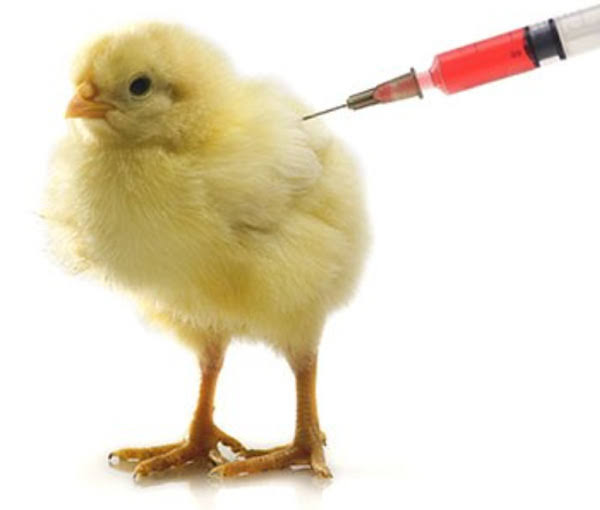The secrets of vaccination success in poultry farming business
1. Ensure the birds are in perfect Health condition BEFORE administering vaccines
2. Stop /withdraw the administration of drugs 1-2 days before vaccination
3. For large farms; all attendants will need to be present to dispense the drinking cans and retrieve the exhausted cans as soon as possible.
 Learn More
Learn More4. Starve birds of water for 2-3 hours, depending on the age of the birds and humidity of the environment. Older birds may be starved longer than the above hours.
5. Sufficient drinking cans should be made available preferably one (1) drinking can to 5-8
birds. This is the most important part of vaccination. Some farmers will allege that the vaccine failed when they start noticing twisted neck (NEWCASTLE) in their farms. This may be due to inability of birds to access drinking cans OR birds had gone through stress conditions during vaccination.
6. Make sure all is set before removing the vaccine bottle from the ice/cooler/fridge to reduce exposure time.
7. Try to use the vaccines as soon as possible as the vaccines are reconstituted, delay may lead to decrease in the titre. Time sequence of vaccination should be accurate.
8. Watch out for birds that are reluctant to drink from the water cans, hold them gently and dip their beak into the water can to taste of the vaccine
9. Wash /rinse water cans before reusing
10. Throw away the used vaccination bottle far away from the farm.
11. Immediately after vaccination, administer plain water (without drugs)
12. Subsequently, administer vitamins to ease stress and to boost immunomodulation.
HOW TO PREVENT VACCINE FAILURE
*STORAGE AND TRANSPORT: buy your vaccine from reliable and reputable Vet Shop which has refrigeration facilities. Live Vaccines are normally stored at a temperature of +2°C to +8°C. They should neither be frozen in a freezer nor stored above +8°C. When transporting, the same temperature should be maintained. Transportation in a flask with ice is good.
*CHECK EXPIRING DATE: Ensure vaccines are not expired by confirming the date on the vial before purchase
MUST READ: How to keep herdsmen away from your farm
*DON’T VACCINATE SICK BIRDS: the immune system of a sick bird is weak and cannot satisfactorily withstand a vaccine, let alone develop immunity against the disease. Vaccination of a sick bird can precipitate the disease it is intended to prevent. Sick birds should therefore be allowed to recover before vaccination.
*Don’t use chemicals or detergents to wash the equipment and drinkers that are to be used for the vaccination exercise. Because the residue if these chemicals inactivate the vaccine.
*Use boiled water to sterilize drinkers before use.
*VACCINES ADMINISTERED VIA DRINKING WATER should be opened under the water into which it is to be mixed. This is because vaccines are normally vaccum sealed. When opened in the air they may draw contaminated air into the container or the vial.
*Whenever necessary, deworming should be carried out one week prior to vaccination.
*Do not expose vaccines to direct sun light.
*Never mix two different vaccines together. Give an interval of two to three days between one vaccine and another.
*Do not vaccinate under high temperature as it affects vaccine potency. Vaccination should be carried out during cooler periods of the day. Heat sources in brooder house may be temporarily turned off except when the weather is too cold.
*Avoid stress during vaccination; stress is a well documented and proven immunosuppressant. During stress the plasma corticosteroid level increases significantly, which result in a severe protein catabolism (break down of protein), resulting in reduced protection of antibodies in the body (poor antibody titres).
*FEED: Feed also plays a very important role directly or indirectly in the development of immunity. Birds fed with well balanced diet will respond better. Feed should be analysed from time to time for the presence of MYCOTOXINS.
*For administration of correct dose ACTUAL WATER Consumption must be known prior to vaccination day.
*Supply sufficient drinkers and even distribution of the drinkers.
*Reconstitute vaccines in a smaller quantity of water before adding it to the drinking.
*Use only skimmed milk for Vaccines. Avoid using powdered milk during vaccination. SKIMMED MILK ACTS AS A PROTEIN SOURCE AND THE VACCINE VIRUS ATTACHES TO IT. Any powdered milk apart from skimmed milk contains 9% or 10% fat, and this fat aggregates on or near the surface of the container (due to light weight of the fat) where vaccine is mixed, leading to the development of different concentration zones of the vaccine in the container.
Note: the higher the skimmed milk concentration, the better the suspension of vaccine in the water.
*After adding the skimmed milk, wait 10mins for complete chlorine neutralization before opening the Vail of the vaccine under the surface of the water.
*Left over vaccine must be properly buried
VOLUME OF WATER AND DOSE USED
AGE LITRES/2000 BIRDS No.OF VAIL
1-2wks. 10. 2vails of 1000doses
3-6wks. 15. 2Vails of 1000doses
7-10wks. 20. 2vails of 1000doses
11-15wks. 30. 2vails of 1000doses
16above 30. 2vails of 1000doses.
DIFFERENT VACCINATION ROUTES.
1. Intra Ocular route — vaccines dropped in the eyes of the bird
2. Intra nasal route — vaccines done by instillation. To achieve this; close one of the nostrils and drop the vaccine in the open one, the bird will inhale it immediately .
3. Oral route: this is also known as drinking water administration.
4. Injection; vaccines are injected intramuscularly or subcutaneously .
5. Wing web punctures or Stab; this method is used to administer fowl pox vaccines.
6. Aerosol Administration: this method is mostly used in hatcheries. Vaccines are being sprayed on the birds.















